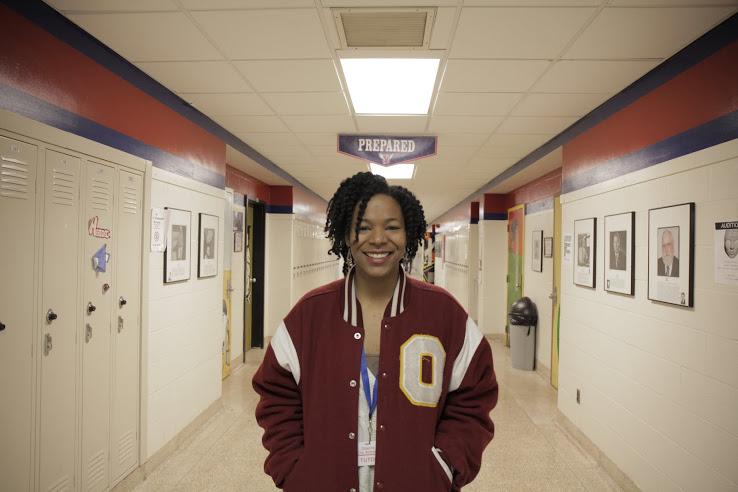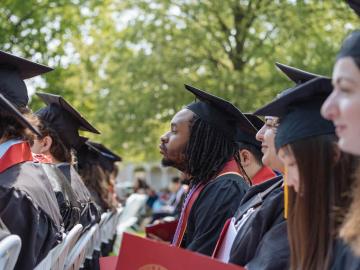Getting to Know Oberlin Through Community Service
February 6, 2015
Rosalind Black

The range of projects students complete over winter term is virtually limitless, allowing them to explore their options academically, spiritually, professionally, creatively. While Oberlin students travel all over the map in January, there is always a contingent who choose to stay and give back to the community they call home during the academic year.
The Bonner Center for Service and Learning (BCSL), which coordinates volunteering opportunities for students year-round, offers many resources for students looking to devote their winter terms to community service. Students apply to work with organizations across the United States and even abroad by submitting a resume, cover letter, and the occasional writing sample through ObieOpps, Oberlin’s online database of job, internship, and volunteering opportunities for students. But, as civic engagement graduate intern and head of winter term projects recruitment Phillip Lundquist reports, many choose to stay in Oberlin and work with local community partners. “We have a growing list of folks who work within the community, either in Oberlin, Lorain, Elyria, and even Cleveland,” Lundquist says. This winter term, about 29 students took on projects in the area.
Why stay in Oberlin knowing its harsh winter weather? First-year Liam McLean, a participant in the Ninde Scholars Program, which pairs college students with 7th- through 12th-graders preparing to be first-generation college students, explains: “I thought it would be convenient to do a winter term project on campus and was looking for an opportunity to learn more about, and become more connected to, the greater Oberlin community.”
For others, such as sophomore Africana studies major Nora Cooper, access to college resources influences the decision to stay in Oberlin over winter term. Cooper—whose independent study project included a vast amount of research about the life and work of Edmonia Lewis for the purpose of writing persona poetry from the artist’s perspective—says she would have struggled without the proximity to the Oberlin College Archives, the Heritage Center, Edmonia Lewis House, and the Clarence Ward Art Library.
Some students find that winter term is the perfect time to strengthen relationships with organizations in town, as first-year Delaney Meyers did, continuing her work with Joanne Rahn at the Oberlin Unitarian Universalist Fellowship that she began in the fall. “[The organization] wanted to know how, where, what, and why young adults think about spirituality,” Meyers says, especially in an age when a lot of communication happens online. “I took that project and expanded it into something I had personally been interested in for a while, which is just [answering the question]: Where do people find meaning in their lives; what drives people on a deeper level?” After conducting about 20 interviews with people ages 18-24 from a variety of backgrounds, Meyers produced a report for the fellowship outlining the trends and patterns she noticed in her interviews that might help the fellowship structure its young adult programming.
Students who choose community service as the driving force of their winter term projects can get a lot done in one month and open up all sorts of possibilities for organizations. “They have an opportunity to complete a project that they might not otherwise have the people power for or the time to get that done quickly,” Lundquist says. The more specific the project, the more likely it is that the BCSL can find a student with the skills to complete it in the span of a winter term session. Students’ winter term research or internships often lay the groundwork for projects, systems, and knowledge that will continue benefitting the community partners even after winter term has long ended.
“It’s nice when you do a project and see the end result—and seeing it function for someone else can be very rewarding,” Lundquist says regarding students’ work with nonprofits. But satisfaction and good vibes aren’t the only perks of completing a service project for winter term. According to Beth Blissman, director of the BCSL, students get the opportunity to apply ideas and theories from their classwork to real-life experiences, form connections that can lead to positions later on, and reflect on what their service means to them and to those around them.
“A lot of the students come to Oberlin, and they want to change the world, but they have no idea the practical skills they need to build in their own lives to be a change agent,” Blissman says. “What does it mean to be a change agent? How do you reflect deeply and thoroughly on the gifts you’ve been given, what your passions are, what skills you naturally bring to the table, and what skills you want to explicitly work on in your life to become the change agent you want to be?”
Although the BCSL encourages students to keep these questions in mind as they go about their projects, it does not completely leave them to their own devices. The BCSL requires the students it sponsors to fill out a community learning agreement before they begin their projects, outlining their personal goals, their project objectives, and how they will accomplish them. Students working outside of Oberlin meet with their BCSL sponsor when they get back, but for students who stay local, the BCSL offers a reflection series that guides participants through conversations about the meaning of service in different contexts.
One reflection focused on the eco-social context of service work in Oberlin, encouraging students to identify what community need they were addressing with their project, why that need existed, and who had attempted to fill that need in the past. Other reflections instructed students to turn inwards and ask themselves what skills and knowledge they had, how they hoped to grow, and how they could apply their current abilities to what they wanted to accomplish.
“Being new to college, it just so happened that I was thinking a lot about what I was going to do with my life, and the reflections offered a nice little structure to put those thoughts into,” Meyers says.
While reflection can often be a solitary and even isolating activity, the reflection series brought students together, opening up discussions to different perspectives while helping students with similar interests find each other. “I really thought the most valuable part was talking to my peers and getting their thoughts and ideas,” says third-year Anna Berntson, who worked with a music therapist at Kendal at Oberlin. Fellow third-year William Lynch, who had a clinical internship at Kendal at Oberlin, agrees: “Being able to explain my thoughts and listen to other people and how they formalize their thoughts—especially if there’s something that’s hard to put into words—that helps.”
From start to finish, the BCSL ensures that local winter term service projects are growing opportunities for students that will give participants new insight into how they can further serve their community. “Being able to find that connection between what you’re passionate about and what drives you with service is beneficial to the people you’re serving as well as yourself,” says third-year Amethyst Carey, who is a Ninde Scholars Program tutor year-round as well as during winter term, and acts as a Bonner leader and RA of the community service-themed wing in Dascomb Hall. “Everyone at the Bonner Center is really wonderful and supportive, full of knowledge, and really good at matching people with projects that use their talents so they can benefit the community but also grow from their own experiences, which I think is equally important.”
Tags:
You may also like…
Making a Difference with Business
December 10, 2024
Omukoko Okoth ’25 chose Oberlin College for its values and opportunities, and in order to take advantage of all that Oberlin has to offer, he decided to participate in the business integrative concentration.
Students Create Project That Engages Local Hospital Patients and Nursing Home Residents
June 4, 2024
Oboist Meera Bhatia ’23 and flutist Emily Nixon ’23 visited local hospital and nursing homes over the past academic year, commissioning and premiering a piece by Jeff Scott through the Gletherow-Young-Deppman Project Award.
Global and Local Changemakers to be Honored at this Year’s Commencement
May 20, 2024
A physician who works to advance HIV and AIDS research and treatment; a couple dedicated to serving the Oberlin community; and a cofounder of the college’s first co-op will all be honored during this year’s Commencement exercises.


